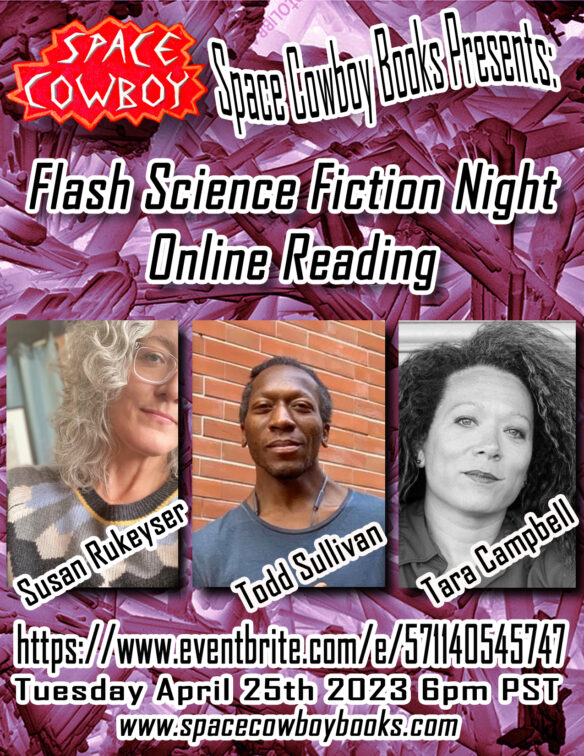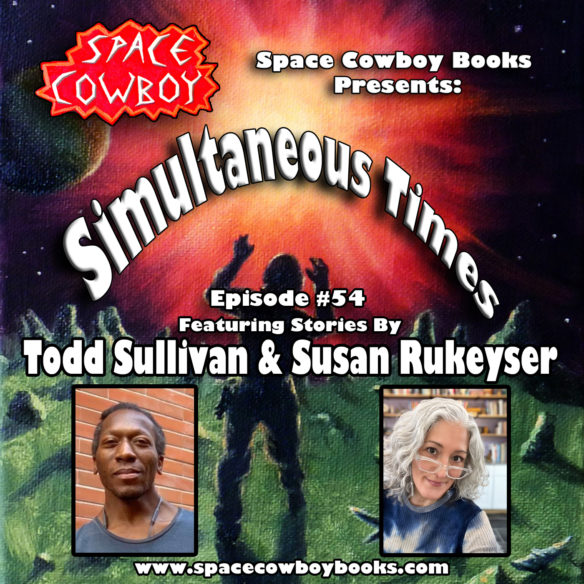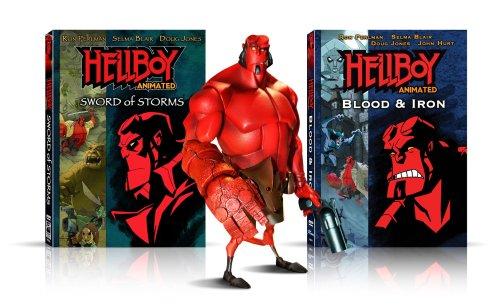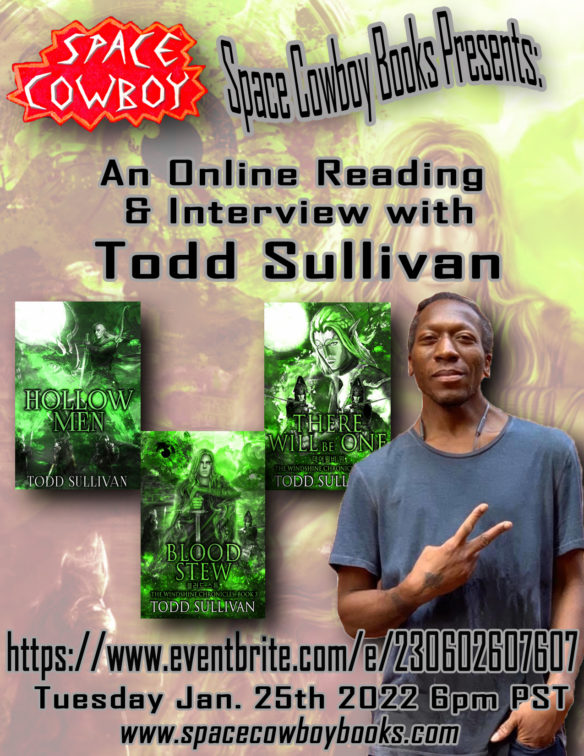(1) CANCELLING HERSELF. Samantha Mills mournfully headlined her latest blog post “’Rabbit Test’ unwins the Hugo”. After reading the Barkley/Sanford report and some others’ analysis of the voting reports, Mills says:
…Looking at the information we currently have, it’s hard for me to conclude anything other than: I shouldn’t have been on that ballot. On the one hand, it seems as though the final vote hasn’t been tampered with, and the voters engaged in good faith with the works they were told were the finalists, for which I still say thank you! But it’s really, really hard for me to see past the initial fact, which is that I shouldn’t have been on that ballot.
This entire experience has been very stressful and fraught. Initially I assumed I wasn’t going to be a finalist, because even though the story had taken off like mad in the U.S., the bulk of the membership was not going to be American. I assumed we would see a lot of Chinese nominees — which would have been cool! We’d get a slice of international scifi that I rarely ever see! And then I was really pleasantly surprised to be informed I was a finalist after all. When the full ballot was posted, I was also surprised at how few Chinese nominees were in the fiction categories. There were four in the short story category, though, so I thought it was legit, and that wow, John Wiswell and I somehow made the cutoff anyway, isn’t that amazing!
I accepted the nomination because, you know, it is supposed to be an honor. But then due to concerns about the Worldcon event itself, I elected not to participate in programming or accept a free trip to Chengdu. This was also fraught. I’ve never been to a Worldcon, and I’d never been nominated before. And as I said in my previous long-winded post on the subject, I have nothing against the fandoms at play. But I wasn’t comfortable being one of the faces of local PR under political circumstances that felt entirely above my pay grade, so I bowed out…
(2) HUGO DIAGNOSIS AND POSSIBLE CURE. Nerds of a Feather editorsThe G, Vance K, Arturo Serrano, Adri Joy, Chris Garcia, Paul Weimer, and Alex Wallace have each written part of “The Hugo Awards Crisis Deepens – Where We Stand and How to Save the Awards”.
The G’s segment concludes:
There are two sets of problems here: (a) the proximate issue of what was done in 2023 and (b) what this reveals or illuminates about the the cartel of self-proclaimed “SMOFs” (secret masters of fandom) who treat the Hugos – and Worldcon more broadly – as their birthright, playground and personal fiefdom. The Hugo Awards are supposed to be democratic in nature and process; the behavior of the self-proclaimed “SMOFs” is fundamentally anti-democratic – and this is by no means confined to Chengdu Worldcon.
Now here are my suggestions for how to rebuild trust in the Hugo Awards:
- No one involved in the administration of the 2023 Hugo Awards, or who assisted in the collection of political evidence, can ever be allowed to have any role in administering the awards ever again.
- Vote tabulation must be performed in a transparent manner using software that multiple people have access to for purposes of validation.
- All tabulations must be independently audited for purposes of verification.
- Individual Cons should no longer administer the Hugo Awards – this should be done by an independent, rotating committee.
- All decisions by said committee must be audited; all disqualified nominees must be notified and given time to appeal.
(3) STARSHIP FONZIE SCOOP. Eric Hildeman got ahead of the “Glasgow 2024 Passalong Funds Announcement” with the information he reported in Episode 36 of his “Starship Fonzie” podcast. He’s now also posted a transcript on his blog.
Here’s more information about Chengdu’s passalong offer of $40,000 to Glasgow:
“… My colleague, and I think it’s fair to say, con-running coach, Alexia Hebel, is not only the treasurer for Capricon, she was the treasurer for the Western component of the Worldcon in Chengdu. And as such, one of her duties was to administer the pass-along funds from Chengdu over to Glasgow. What are pass-along funds? Well, if there’s any money left over after running a Worldcon, they have the option and traditionally always do of passing that surplus along to the next Worldcon as a donation towards its effort. It’s a bit more complicated than that, but that’s the basic idea. While in between duties at Capricon and after speaking with Ben Yalow about it, she offered $40,000 in pass-along funds to the Glasgow Worldcon. And again, that’s de rigueur. You know, every Worldcon does this if they can. Glasgow turned the money down. They’re so anxious to avoid any associations with the Chengdu Worldcon that they’re unwilling to even touch the money, to the tune of 40 grand.
(4) SEEN AROUND FANDOM. These convention badge ribbons will be in great demand once somebody starts handing them out.
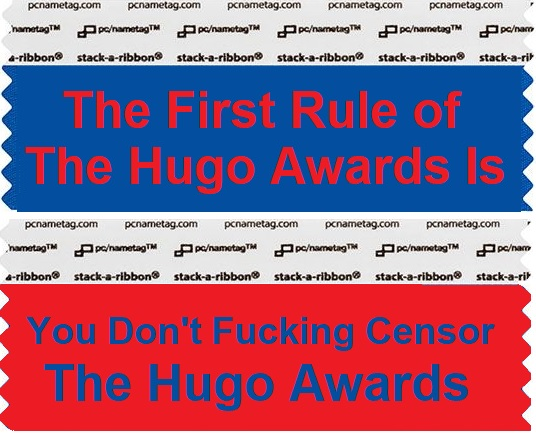
(5) DRAMA CRITIC. Lauren Oyler asks what effect Goodreads one-star reviews – or any other reviews – have in “’God forbid that a dog should die’: when Goodreads reviews go bad” at the Guardian.
Something dramatic happens on a social media platform every day. On Goodreads, the anachronistically designed website for logging, rating (out of five) and reviewing books, the dramas are more amusing, and they occasionally even draw attention from areas beyond the site’s supposedly book-loving users. The most recent featured Cait Corrain, the fantasy author who set up an elaborate network of fake accounts to post positive reviews of her own forthcoming book as well as negative reviews of authors she felt were her competitors. When citizen journalists uncovered her plot in December 2023, her book was cancelled, and she lost her agent and a future book deal.
A juicy, postmodern story of self-sabotage, or a sad one about the intersection of the internet and mental health. Regardless, its stakes are relatively low: publicly harassing one’s colleagues is a sackable offence anyway, and it’s hard to find someone who really cares about the vicissitudes of the young adult literature world who isn’t part of the subculture. I’m not; I’m a professional critic, and an author of a literary novel. I’m a snob. I care about my book, and the authors I feel are my competitors. And while Goodreads has been around since 2007, its significance to the broader literary world remains steadfastly confusing. Does it sell books? Does it make and break careers? The flashy, funny stories that have emerged about the site over the last several years have done exactly what its proprietors surely want: make it seem like Goodreads is important. But is it?…
(6) SIMULTANEOUS TIMES. Space Cowboy Books of Joshua Tree, CA presents episode 72 of the Simultaneous Times podcast with Eugen Bacon & Todd Sullivan. Stories featured in this episode:
- “A Good Ball” by Eugen Bacon, with music by Fall Precauxions, read by Jean-Paul Garnier
- “Shards of Glass” by Todd Sullivan, with music by Phog Masheeen, read by Jean-Paul Garnier
Theme music by Dain Luscombe
Available on all podcast players or at Podomatic.
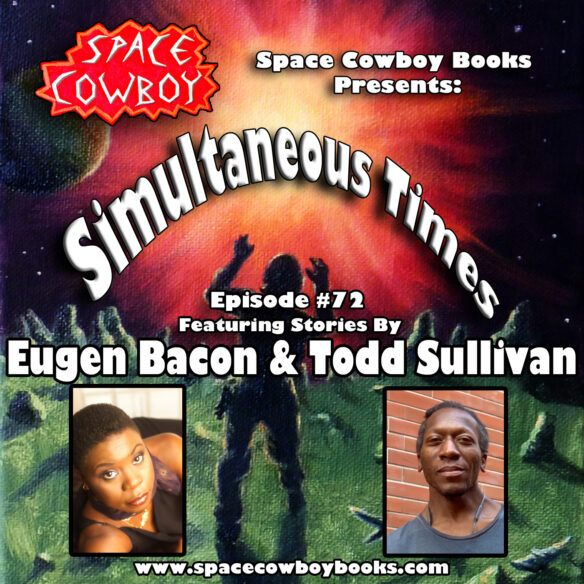
(7) THE SOURCE: SARAH MAAS FANTASY. Ann Smoot points out “The Jewishness of Sarah Maas’ Fantasy World” at Hey Alma. Beware spoilers.
Whether you’ve been thinking about starting to read “A Court of Thorns and Roses,” or you’re a long-time fan of “Throne of Glass,” it’s likely that you’ve heard of Sarah J. Maas. The author is making headlines the world over thanks to her fantasy series. Whether you’re invested in them for the well-written smut or the beautiful way she weaves her stories, fans can’t put down her novels. But what some readers might not know about the rather private author is that she was raised by a Catholic mother and a Jewish father and attended Hebrew school in her youth. She went on to attend Hamilton College for religious studies and met her future husband at her college’s Hillel, where he served as president. Her connection to her Jewish faith isn’t just apparent when looking at her personal history, though. It just takes a keen eye and a flip through any of her series’ to recognize that she has woven her culture through every story….
… The way that Maas deftly and lovingly weaves her Jewish culture and faith into her writing opens up the world of our stories and tradition to a wider audience. Jewish faith hasn’t had a very loud voice in fantasy — but thanks to Maas, that might be about to change.
(8) ROLE MODEL. [Item by Danny Sichel.] “Peter Talks To a Spider”, a ten-page comic, by Donny Cates and Chip Zdarsky, published on Marvel’s official Threads account: “What happens when Spider-Man chats with an actual Spider”. Images at the link.
(9) TODAY’S BIRTHDAY.
[Written by Cat Eldridge.]
Born February 18, 1919 — Jack Palance. (Died 2006.) Tonight I’ve come to talk of Jack Palance who was born of Ukrainian immigrant parents with name of Volodymyr Palahniuk. His last name was actually a derivative of his original name. While guesting on What’s My Line?, he noted that no one could pronounce his last name, and how it was suggested that he be called Palanski but instead that he decided just to use Palance instead. He didn’t say where his first name came from.
(OK nitpickers, I do not want to hear from you. Seriously, I don’t. His career makes a gaggle of overly catnapped kittens playing with skeins of yarn with lots of lanolin still on it look simple by comparison so I may or may not have knitted it properly here, so bear with my version of it.)
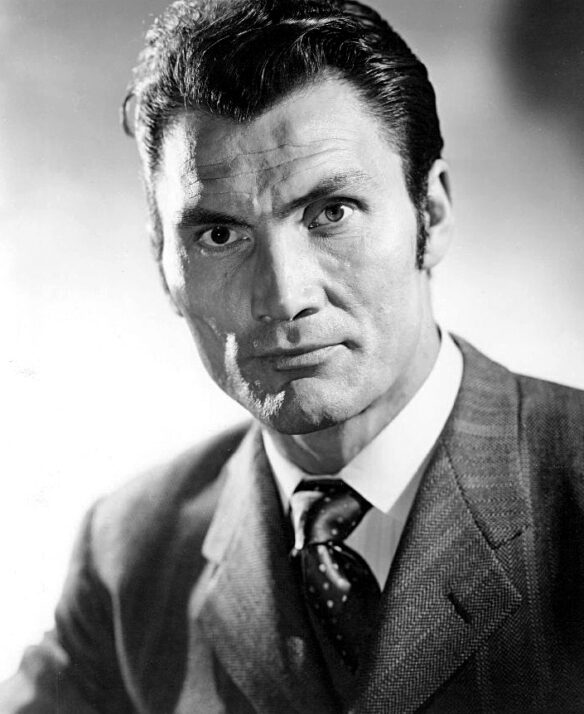
Surprisingly it looks like that he got his start in our end of things in television performances and relatively late as they started in the Sixties with the first one being Jabberwock on a musical version of Alice Through the Looking Glass. I’m sure I want to see that as it had Jimmy Durante as Humpty Dumpty, and the Smothers Brothers as Tweedledee and Tweedledum.
Next up was a Canadian production with him in the title role of The Strange Case of Dr. Jekyll and Mr. Hyde, and that in turn saw him being the lead in Dracula, also known as Bram Stoker’s Dracula and Dan Curtis’ Dracula, the last when the ego of the Director got way, way too big.

I’m going to digress here because it’s so fascinating. In 1963, The Greatest Show on Earth first aired. This Circus drama had Johnny Slate as the big boss who keeps the circus running as it moves from town to town. It was produced by Desilu, the production company founded by Lucille Ball and Desi Arnaz, Sr. It lasted but one season as it was up against shows by Jack Benny and Richard Boone.
A bit of hard SF was next, Cyborg 2, released in other countries as Glass Shadow, creative but terribly uninformative, where he’s Mercy, an old renegade cyborg.
Remember my Birthday recently on the wonderful Carol Serling? Well he was in The Twilight Zone: Rod Serling’s Lost Classics film that she made possible as Dr. Jeremy Wheaton in “Where the Dead Are”.
If Treasure Island counts as genre and yes I do count it in my personal canon, then his role as Long John Silver is definitely canon.
He got to play Ebenezer Scrooge in Ebenezer. Now the fun part is that it’s set in the Old West, where he is the most greedy, corrupt and mean-spirited crook in the old West obviously, he sees no value in “Holiday Humbug” by several reviewers. This film I went to look up on Rotten Tomatoes, but no rating there.
Not at all shockingly to me, he shows up on The Man from U.N.C.L.E. where he plays a character of Louis Strago in a two-parter “The Concrete Overcoat Affair” which got reedited as “The Spy in the Green Hat”.
A bit of horror was next in Tales of the Haunted as Stokes in “Evil Stalks This House” was up late in career.
Finally for roles that I’m reasonably sure were of genre interest, he was on Buck Rogers in the 25th Century as Kaleel in the “Planet of the Slave Girls” episode.
One more gig for him related to genre or at least genre adjacent, though not as a performer, but as the host of Ripley’s Believe It or Not! for four years. He had three different co-hosts from season to season, including his daughter, Holly Palance, actress Catherine Shirriff, and finally singer Marie Osmond.
I’ll take your leave now.
(10) COMICS SECTION.
- Brewster Rockit has a writing tall tale.
- Broom Hilda has writing hopes.
- Crabgrass plans writing time travel.
- Non Sequitur brings us to an odd facts sideshow.
- Reality Check has a lot of mixing.
- Wallace the Brave has a detailed worry.
- The Argyle Sweater shows a genie with a hearing problem – or maybe a listening problem.
(11) HEAVENLY OSCULATION. [Item by Steven French.] David Tennant answers Guardian readers’ questions about the length of his sideburns, what kind of cheese he would be and being a Doctor Who fan: “David Tennant: ‘Kissing Michael Sheen was fine. He’d brushed his teeth’”.
“Am I as geeky as the Doctor who fans? Yes. As a Doctor Who fan myself of old, I can very much can plug into that. I don’t think I ever got in trouble at school. That is one of those stories that’s ended up on Wikipedia. I wrote an essay on Doctor Who, which some unpleasant newspaper found and printed. But I didn’t get in trouble for it. I think I got quite a good mark for it.”
(12) LGBTQ VIDEO GAMERS. The New York Times article about a GLAAD study says “Report Says 17 Percent of Gamers Identify as L.G.B.T.Q.” There were 1500 participants in the survey.
Less than 2 percent of console video games include L.G.B.T.Q. characters or story lines even though 17 percent of gamers are queer, according to GLAAD’s first survey on the industry.
The survey, whose results were released on Tuesday, said a majority of respondents had experienced some form of harassment when playing online. But it also found that many queer gamers saw virtual worlds as an escape in states where recent legislation has targeted L.G.B.T.Q. people. Seventy-five percent of queer respondents from those states said they could express themselves in games in a way they did not feel comfortable doing in reality.
“That is a statistic that should pull on everyone’s heartstrings,” said Blair Durkee, who led the advocacy group’s survey alongside partners from Nielsen, the data and marketing firm. “The statistic is driven largely by young gamers. Gaming is a lifeline for them.”
GLAAD has produced a similar breakdown of queer representation in television since 1996. Its latest report found that 10.6 percent of series regulars in prime-time scripted shows identified as L.G.B.T.Q., which researchers said helped put their video game study in perspective….
(13) CREATING VIDEO FROM TEXT. That’s the latest step forward in artificial intelligence says OpenAI in “Sora”.
We’re teaching AI to understand and simulate the physical world in motion, with the goal of training models that help people solve problems that require real-world interaction.
Introducing Sora, our text-to-video model. Sora can generate videos up to a minute long while maintaining visual quality and adherence to the user’s prompt.
Today, Sora is becoming available to red teamers to assess critical areas for harms or risks. We are also granting access to a number of visual artists, designers, and filmmakers to gain feedback on how to advance the model to be most helpful for creative professionals.
We’re sharing our research progress early to start working with and getting feedback from people outside of OpenAI and to give the public a sense of what AI capabilities are on the horizon….
… The current model has weaknesses. It may struggle with accurately simulating the physics of a complex scene, and may not understand specific instances of cause and effect. For example, a person might take a bite out of a cookie, but afterward, the cookie may not have a bite mark….
(14) VIDEO OF THE DAY. The second trailer for Godzilla x Kong: The New Empire has dropped. Only in theaters March 29.
The guardians of nature. The protectors of humanity. The rise of a new empire.
The epic battle continues! Legendary Pictures’ cinematic Monsterverse follows up the explosive showdown of “Godzilla vs. Kong” with an all-new adventure that pits the almighty Kong and the fearsome Godzilla against a colossal undiscovered threat hidden within our world, challenging their very existence—and our own. “Godzilla x Kong: The New Empire” delves further into the histories of these Titans and their origins, as well as the mysteries of Skull Island and beyond, while uncovering the mythic battle that helped forge these extraordinary beings and tied them to humankind forever.
[Thanks to SF Concatenation’s Jonathan Cowie, Steven French, Mike Kennedy, Paul Weimer, Eric Hildeman, Joshua K., Cliff Ramshaw, Kathy Sullivan, Jean-Paul Garnier, Dan Bloch, Rich Lynch, Danny Sichel, Andrew Porter, John King Tarpinian, Chris Barkley, and Cat Eldridge for some of these stories. Title credit belongs to File 770 contributing editor of the day Cat Eldridge.]

